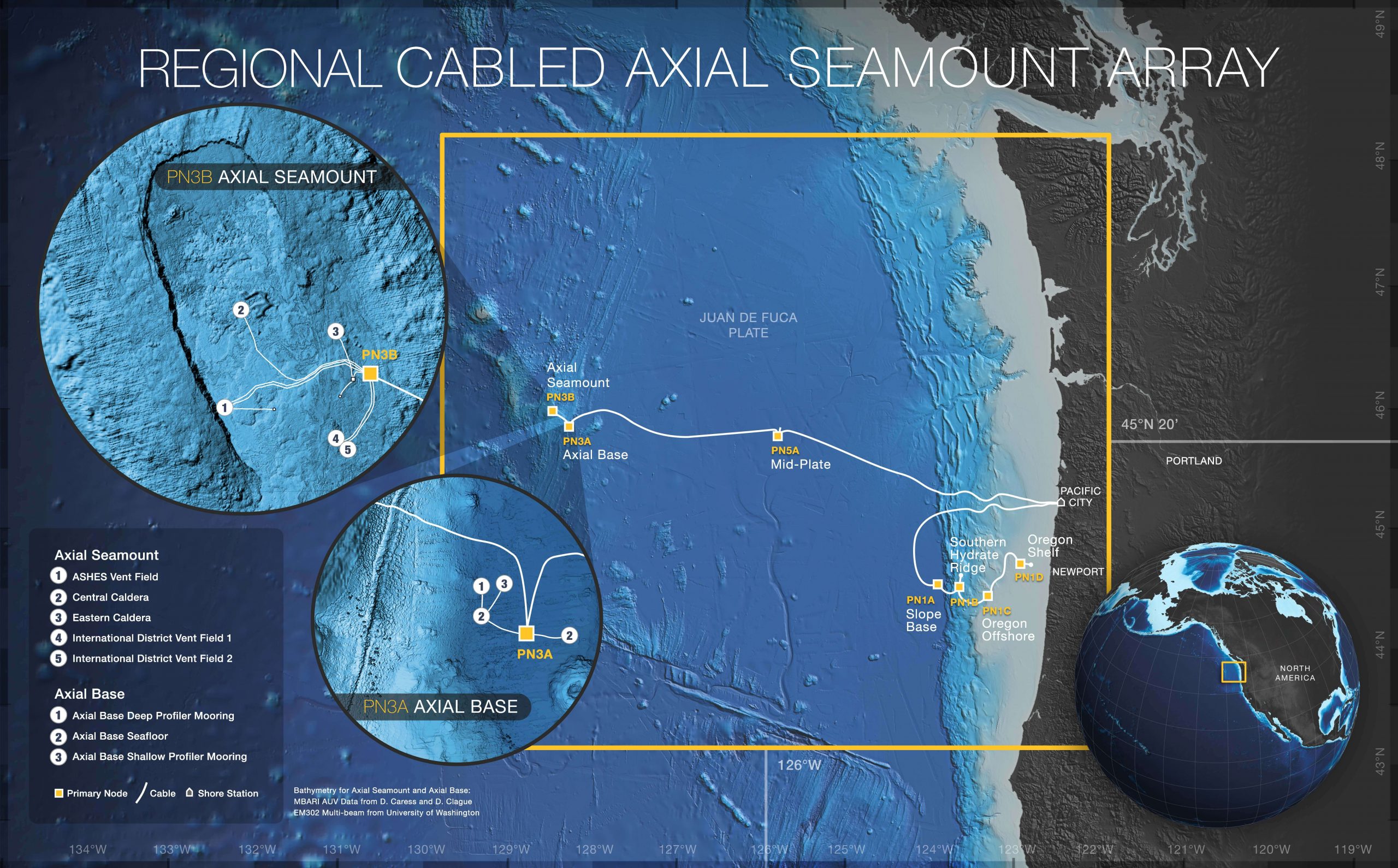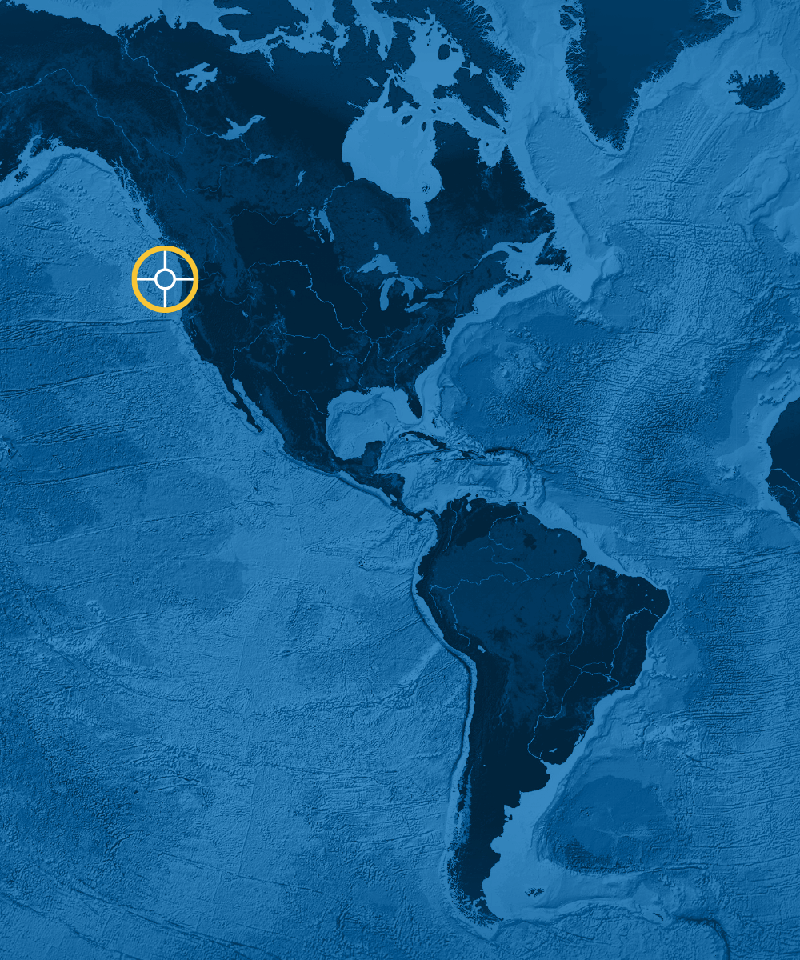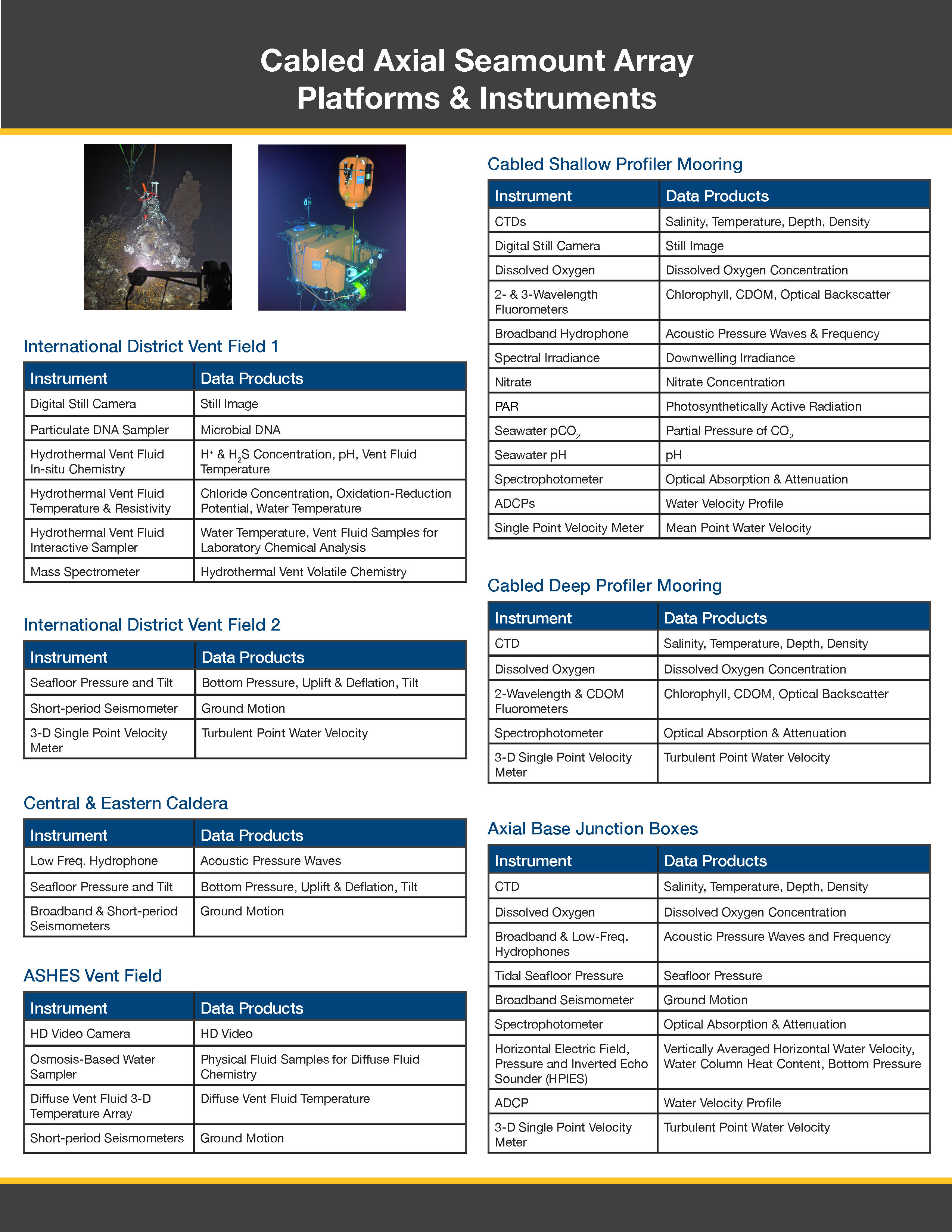Cabled Axial Seamount Array
The Axial Seamount portion of the Regional Cabled Array focuses on blue water environments greater than 500 km offshore (Axial Base) and the Juan de Fuca mid-ocean ridge spreading center (Axial Caldera).
Axial Seamount is the most magmatically robust volcano on the Juan de Fuca Ridge, having erupted in 1998, April 2011, and again in April 2015. It hosts numerous active hydrothermal fields (e.g. ASHES and the International District) and abundant sites of diffuse flow. A diverse array of geophysical, chemical, and biological sensors, as well as a high-definition camera and digital still camera, provide real-time information on linkages between seismic events and fluid flow.
Axial Base is in an open-ocean environment that permits collection of data linking ocean dynamics, climate, and ecosystem response from basin to regional scales. Here, large-scale currents (North Pacific/California Currents, and the subpolar gyre) interact, transporting heat, salt, oxygen, biota, and other crucial elements of the region’s ecosystem.
Axial Caldera, the summit of the seamount, hosts the most advanced underwater volcanic observatory in the world ocean. Using data from this site, scientists examine formation and alteration of oceanic crust, the relationships between seismic activity, volcanic eruptions, and fluid flow in diffuse and black smoker sites, and how changes in fluid temperature and chemistry impact microbial and macrofaunal communities.
The Cabled Axial Seamount Array includes electro-optical submarine cables that provide high-power, bandwidth, and two-way real-time communication to seafloor and water column instrumentation. Within the Axial Seamount Array, infrastructure is located in the active caldera of Axial Seamount and at its base. Five medium-power Junction Boxes are located on the Axial Caldera site. Several contain geophysical instruments (seismometers and hydrophones) paired with pressure-tilt devices to monitor volcanic inflation and deflation. Hydrothermal vents are examined using a high definition camera, a myriad of sensors to examine vent fluid and volatile chemistry (including a mass spectrometer), a microbial DNA sensor, and a 3D thermister array.
At Axial Base, observations are made from the seafloor to near the sea surface using instrumented junction boxes paired with a Cabled Deep Profiler Mooring and a Cabled Shallow Profiler Mooring with an instrumented science pod that rises from 200 m to just below the surface.
For more information, check out the Regional Cabled Array related news stories.
Sites
This array includes following research sites and platforms.
| Key | Site Name | Water Depth |
|---|---|---|
| PN03A | Axial Base Primary Node (PN03A) | 2,611 meters |
| PN03B | ASHES Vent Field Primary Node (PN03B) | 1,525 meters |
| PN05A | Juan de Fuca Mid-Plate Primary Node (PN05A) | 2,800 meters |
| Seamount 1 | ASHES Vent Field (RS03ASHS) | 1,552 meters |
| Base 2 | Axial Base Seafloor (RS03AXBS) | 2,606 meters |
| Base 1 | Axial Base Deep Profiler Mooring (RS03AXPD) | 2,604 meters |
| Base 3 | Axial Base Shallow Profiler Mooring (RS03AXPS) | 2,607 meters |
| Seamount 2 | Central Caldera (RS03CCAL) | 1,523 meters |
| Seamount 3 | Eastern Caldera (RS03ECAL) | 1,519 meters |
| Seamount 4 | International District Vent Field 1 (RS03INT1) | 1,516 meters |
| Seamount 5 | International District Vent Field 2 (RS03INT2) | 1,526 meters |



